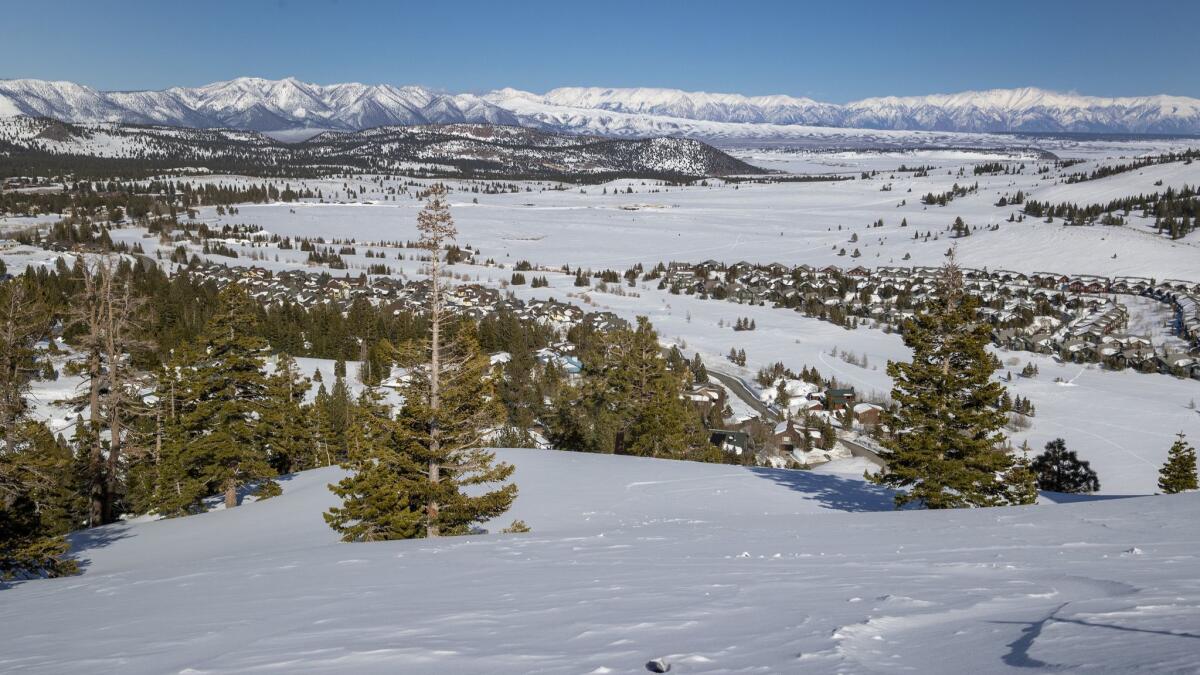Melting snow may have caused earthquakes in California, research shows

New research unveiled recently links a series of California earthquakes to heavy snowmelt during a wet winter.
Scientists involved in the work said they believe that water from the runoff flowed down to the groundwater, causing seismic movement. The research offers new geological insights into one of the most seismically active areas of California.
In 2017, a swarm of seismic activity occurred near California’s Long Valley Caldera in the Mammoth Mountain area. Over the period of a few weeks, about 100 mostly minor earthquakes were tabulated each day.
During the same period of seismic activity, the area had high levels of flooding due to snowmelt. The 2016-2017 winter brought heavy snow that created one of the largest snowpacks ever recorded in California’s history. A record amount of snowfall occurred in the same region this year, raising the question of whether the same occurrence will happen in 2019.
Emily Montgomery-Brown, a researcher at the U.S. Geological Survey who recently published the findings and shared them at a conference in Seattle, said she initially wondered if the swarms could be pegged to volcanic activity.
While giving a tour at the Mammoth Community Water District, she spoke with staff there about the flooding and recent seismic activity. First observed as two unrelated happenings, linked only by timing, it would be a few weeks later that a discovery was made connecting the two natural events.
Brown’s colleague David Shelly found that the swarm of earthquakes was migrating downward — opposite to what is commonly observed. Typically during such swarms, fluid starts from a deep source and migrates upward toward the surface. In the case of what was happening near the Long Valley Caldera, fluid was starting at the surface and traveling down.
The finding triggered the idea that the snowmelt could be directly correlated to the seismic activity.
I think in the past people have seen these swarms, but assumed it was unrelated to the magmatic system.
— Emily Montogmery-Brown
Brown and her colleagues examined data from 1984 to 2017. Over that period, Brown said, 55% of the 8,497 Long Valley earthquake swarms had occurred “on the wettest days during high snow years.” Rates of shallow seismic activity in the area were about 37 times higher during wet periods versus dry.
“I think the discovery of these snowmelt swarms might be the biggest new interpretation of something that’s happened there. I think in the past people have seen these swarms, but assumed it was unrelated to the magmatic system,” Brown said.
The formation of rocks may be another factor for the snowmelt’s effect.
“What we think is unique of the Long Valley area is that the rock layers have been deformed so much that they’re tipped up on end, like books on a shelf,” Brown said. The upward layers provide conduits for the snowmelt. The water recharges the groundwater, altering the pressure of rocks below the ground surface, which resulted in the 2017 swarms. The movement of groundwater has previously been connected to past earthquake swarms.
The Long Valley Caldera resumed inflating in 2011 — one of the biggest changes that has occurred in the volcano in recent years.
“The caldera itself goes through breathing episodes where it will increase in elevation for a while, then it pauses for a while and resumes inflating,” Brown said. While the snowmelt can be a factor for some seismic activity at the volcano, researchers will not stop monitoring the area for possible volcanic activity in the future. They will also continue to watch for seismic activity as it pertains to snowmelt, which typically begins in late May to early June. The expectation is that there will be a large number of seismic swarms, as there have been in the past, but there’s no guarantee.
“Sometimes in a big, wet year like last year, it can release all of the strains so the swarms might not be as big as the year before,” Brown said. She compared it to a person exerting all their energy at an amusement park in one day, leading to a less active disposition on day two.
The volcano in Mono County erupted about 760,000 years ago, spewing magma and covering parts of California in hot ash that blew to what is present-day Nebraska. Scientists have been monitoring it since 1980 when, following a series of earthquakes, researchers discovered that the volcano had started to actively rise.
The volcano is one of three in California that the federal government considers to be a high threat. Though there are warning signs before a volcano erupts, the chance of eruption in California is similar in risk to that of a major earthquake on the San Andreas fault.
Twitter: @cshalby
More to Read
Sign up for Essential California
The most important California stories and recommendations in your inbox every morning.
You may occasionally receive promotional content from the Los Angeles Times.








